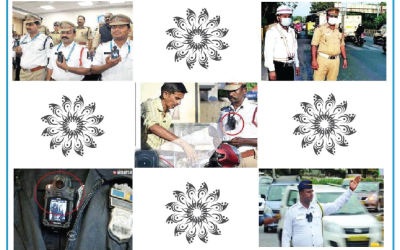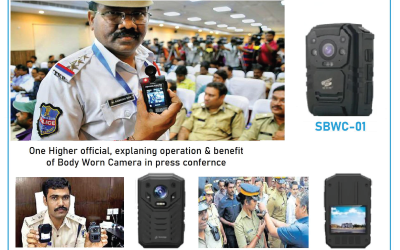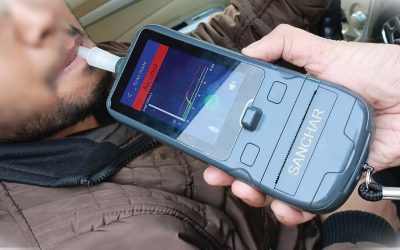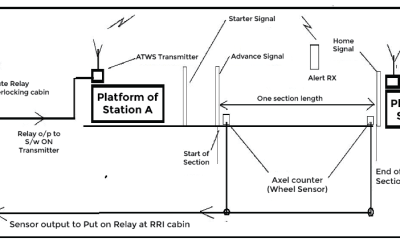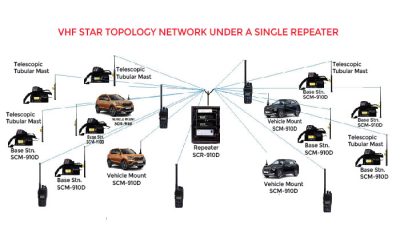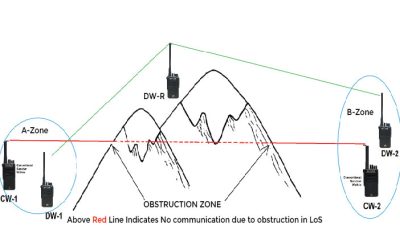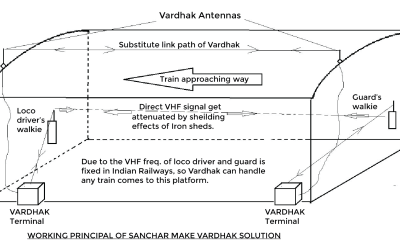BWC to Maharashtra
A CASE STUDY ON ELEVATING LAW ENFORCEMENT WITH...
BWC to Assam Rifles
POWERING SECURITY AND ACCOUNTABILITY WITH BODY...
BAA to Rajasthan Police
ENHANCING LAW & ORDER WITH BREATH ALCOHOL...
Automatic Train Warning System
A CASE STUDY ON DESIGN, IMPLEMENTATION, SUPPLY...
A Case Study of MoD Projects
India’s government launched the “Make in India” initiative in 2014 to encourage local manufacturing and reduce reliance on imports. As part of this initiative, the government introduced a new category of license-free radios in 2017, known as License-Free Radios (LFR). In this blog post, we’ll explore what LFRs are and how they are promoting local manufacturing in India.
What are License-Free Radios?
License-Free Radios (LFR) are radio devices that operate on specific frequencies without the need for a license from the Department of Telecommunications (DoT). These radios are designed to be used for short-range communication, making them ideal for use in small businesses, factories, and other similar settings.
The DoT has designated specific frequency bands for LFRs to operate on, including the 136-174 MHz VHF band and the 403-470 MHz UHF band. These frequency bands are well-suited for short-range communication, with a range of up to 3-5 kilometers depending on the terrain and obstacles in the area.
Promoting Local Manufacturing
One of the key goals of the Make in India initiative is to promote local manufacturing and reduce reliance on imports. The introduction of LFRs has been a significant step in achieving this goal, as it has created a new market for local manufacturers to produce affordable, high-quality radios.
Prior to the introduction of LFRs, businesses and individuals in India had to rely on imported radios, which were often expensive and not well-suited to local needs. The availability of license-free radios has made it easier for businesses to adopt wireless communication, improving their operational efficiency and productivity.
Benefits of LFRs
The availability of LFRs has several benefits for businesses and individuals in India. Firstly, they are significantly cheaper than licensed radios, making them accessible to a wider range of businesses and individuals. Secondly, they are easy to use and require minimal training, making them ideal for small businesses and other settings where technical expertise is limited.
LFRs are also well-suited to local conditions, with their short-range communication capabilities making them ideal for use in small factories, warehouses, and other similar settings. They can be used to coordinate tasks and communicate effectively, improving overall productivity and efficiency.
Conclusion
The introduction of License-Free Radios (LFR) in India has been a significant step towards promoting local manufacturing and reducing reliance on imports. These radios are affordable, easy to use, and well-suited to local conditions, making them ideal for small businesses and other settings. With the availability of LFRs, businesses in India can now adopt wireless communication, improving their operational efficiency and productivity.
VHF Connectivity In Himachal Forest Department
CASE STUDY: EXAMINATION OF VHF CONNECTIVITY...
SANCHAR’S NEW PRODUCT CALLED “DIGITAL RELAY RADIO (DRR)” AT CENTRAL COALFIELD, RANCHI
India’s government launched the “Make in India” initiative in 2014 to encourage local manufacturing and reduce reliance on imports. As part of this initiative, the government introduced a new category of license-free radios in 2017, known as License-Free Radios (LFR). In this blog post, we’ll explore what LFRs are and how they are promoting local manufacturing in India.
What are License-Free Radios?
License-Free Radios (LFR) are radio devices that operate on specific frequencies without the need for a license from the Department of Telecommunications (DoT). These radios are designed to be used for short-range communication, making them ideal for use in small businesses, factories, and other similar settings.
The DoT has designated specific frequency bands for LFRs to operate on, including the 136-174 MHz VHF band and the 403-470 MHz UHF band. These frequency bands are well-suited for short-range communication, with a range of up to 3-5 kilometers depending on the terrain and obstacles in the area.
Promoting Local Manufacturing
One of the key goals of the Make in India initiative is to promote local manufacturing and reduce reliance on imports. The introduction of LFRs has been a significant step in achieving this goal, as it has created a new market for local manufacturers to produce affordable, high-quality radios.
Prior to the introduction of LFRs, businesses and individuals in India had to rely on imported radios, which were often expensive and not well-suited to local needs. The availability of license-free radios has made it easier for businesses to adopt wireless communication, improving their operational efficiency and productivity.
Benefits of LFRs
The availability of LFRs has several benefits for businesses and individuals in India. Firstly, they are significantly cheaper than licensed radios, making them accessible to a wider range of businesses and individuals. Secondly, they are easy to use and require minimal training, making them ideal for small businesses and other settings where technical expertise is limited.
LFRs are also well-suited to local conditions, with their short-range communication capabilities making them ideal for use in small factories, warehouses, and other similar settings. They can be used to coordinate tasks and communicate effectively, improving overall productivity and efficiency.
Conclusion
The introduction of License-Free Radios (LFR) in India has been a significant step towards promoting local manufacturing and reducing reliance on imports. These radios are affordable, easy to use, and well-suited to local conditions, making them ideal for small businesses and other settings. With the availability of LFRs, businesses in India can now adopt wireless communication, improving their operational efficiency and productivity.
A CASE STUDY ON DESIGN, IMPLEMENTATION, SUPPLY AND INSTALLATION OF “VARDHAK” FOR INDIAN RAILWAYS
Principal cause for Developing the product...

